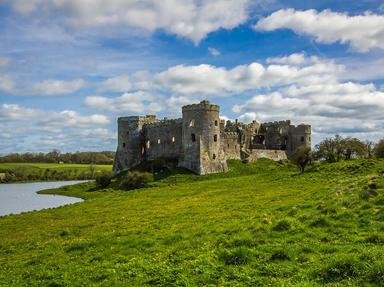Quiz Answer Key and Fun Facts
1. Let's start in the capital city then - where is Cardiff's main cathedral situated?
2. Some 10-15 miles out of Cardiff, another "Llan" is to be found - literally translated, this small town west of Pontypridd means "Church of the Three Saints". What is this village called?
3. A couple of miles south of Llantrisant are the Llanerch Vineyards. If the Welsh word for "vineyard" was written in Welsh, it would also include the word "llan" in it - so what is the Welsh word for a vineyard?
4. Next stop is a town some 50 or so miles west of Cardiff, famed for its historical tinplate working and steel industries - so much so that it became known as "Tinopolis" by the end of the 19th century. It's also home to one of the world's most famous rugby teams.
5. Moving to the north of the County of Carmarthenshire now, we come to a market town on the foothills of the Brecon Beacons National Park. A famous school is situated in this town, as well as a memorial to a Welsh martyr. Where are we?
6. Llan de Cubel are a popular folk band - where do they call "home"?
7. On the other side of the Brecon Beacons, a famous Agricultural Show takes place every summer, known as The Royal Welsh Show. Most people would say that the Show takes place in Builth Wells, but to be precisely correct, it takes place where?
8. Some 50 or 60 miles north of Builth, on up the A470, then on to the A483, and just before you get to Wrexham, take a bit of a left turn. You'll come to Llangollen. What internationally known event takes place there every year?
9. Go due west from Llangollen, and eventually you'll reach Pwllheli, then on to Criccieth, and its Norman Castle. In between these two lovely North Wales coastal towns, you'll have passed very briefly through Llanystumdwy, the home of which famous British politician?
10. Llanfairpwllgwyngyllgogerychwyrndrobwllllantysiliogogogoch. Is it one of over 430 places in Wales starting with "Llan" or is it just a myth? Many visitors to Wales love to hear this name being pronounced - but is this a real place?
Source: Author
huw27
This quiz was reviewed by FunTrivia editor
Exit10 before going online.
Any errors found in FunTrivia content are routinely corrected through our feedback system.

